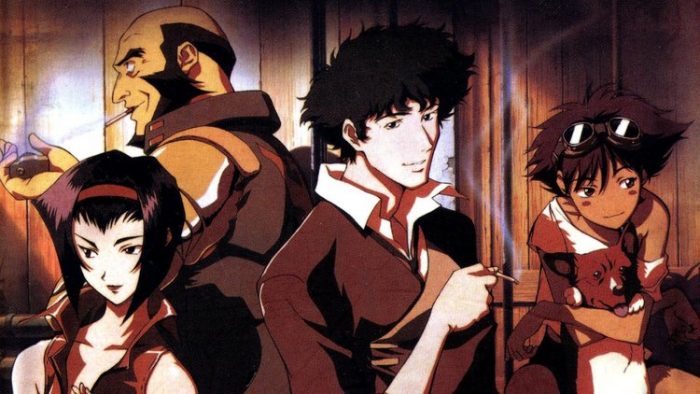‘Cowboy Bebop’ is 20 Years Old and Better Than Ever
April 2018 marks the 20th anniversary of Shinichiro Watanabe’s anime series Cowboy Bebop. I, like millions of Americans in the late ’90s, discovered Cowboy Bebop on Cartoon Network’s run of Toonami, where the network would showcase a sampling of Japan’s best animation. From Sailor Moon to Gundam Wing they would play the anime that would influence a generation and fans and creators alike.
Cowboy Bebop was one of those animes. Airing late at night, Cowboy Bebop became an instant favorite for me and my sister. We shared a room and we would watch as Spike, Jet, Faye, Edward, and Ein traversed the universe and wrangled up some bounties, all while telling their tragic backstories. Cowboy Bebop indeed broke the mold on what anime could be for American audiences, paving the way for revolutionary storytelling and iconic visuals that would be copied for years to come.
Watanabe was greatly influenced by western music for most of his series and was taken by blues and Jazz especially while envisioning what his new series could be. He took the style of old westerns, slammed it into a space opera, added a revolving door of characters and voila! You’ve got yourself a fascinating premise powered by Yoko Kanno’s compositions.
When you talk about Cowboy Bebop’s influence on pop culture, the first thing fans often think about is that opening credits song. I know some of you are singing it in your head. The song Tank! by Yoko Kanno and The Seatbelts is synonymous with the series. No other show integrated music with animation quite like this and the soundtrack itself was like the sixth leadcharacter in the show. The fast-paced Jazz blended into every fight scene, punctuating every kick, punch, and crash scene throughout the show.
It’s impossible to forget the masterful scoring that builds up heartbreaking moments like in the first episode “Asteroid Blues,” where Katerina and Asimov are two people in love and on the run from Spike and the ISSP. Asimov is high on his supply is out of control, and Katerina knows it. The music becomes a sad, slow jazz melody as Asimov delves deeper into depravity. Knowing that there is no escape, the music immediately halts, and Katerina shoots the hopped-up Asimov before being shot down by the ISSP. All while the crooning harmonica waxes on, punctuating the heartbreaking scene. This use of music was unheard of in anime, Cowboy Bebop pioneered and perfected it. Unlike many of its contemporaries, it has stood the test of time.
Cowboy Bebop’s soundtrack isn’t the only thing that broke barriers in anime. It was one of the only shows in Japan that tackled subjects mainstream anime was too afraid to approach. The series confronted drug use, domestic violence, transexuality, homosexuality, PTSD, terrorism, and infidelity. Anime at the time often veered away from these topics, deeming them not consumable by the general public. Cowboy Bebop’s bold storytelling led to a new way to bring these hard topics to the screen with nuance.
A popular trend in anime before Cowboy Bebop was action-based storytelling infused with situational comedy. But when Cowboy Bebop arrived, a very different path was shown. Spike, Jet, Faye, Ein, and Edward were each given their own complicated and dark pasts. The anime didn’t care if you found them redeemable, funny, or heroic. It painted its characters as real people you could understand and relate to. Jet’s time in the police to his lost love. Faye’s murky past, and her overcompensating for the pain she obviously feels for losing so much of herself. Edward’s quirky earthbound family. Ein’s super-human like intellect. It is a testament to Watanabe and his creative team that they were able to intertwine these backstories with a what looked like it could be just another action show.
But it’s not even just the crew. Cowboy Bebop makes sure to invite us into the lives of every bounty Spike and the gang pursue, creating complex and heart-wrenching worlds for us to dive into and explore. The writing on this show transcends anime – it is hands-down some of the best show writing you’ll find on television, even 20 years later.
Cowboy Bebop is now 20 years old and it is wild to think that this show, which has influenced countless artists, filmmakers, writers, and animators, feels utterly ageless. So here is to another 20 years of an anime that latched itself onto a generation.
See you in space, cowboy.
The post ‘Cowboy Bebop’ is 20 Years Old and Better Than Ever appeared first on /Film.
from /Film https://ift.tt/2HtVY1p

